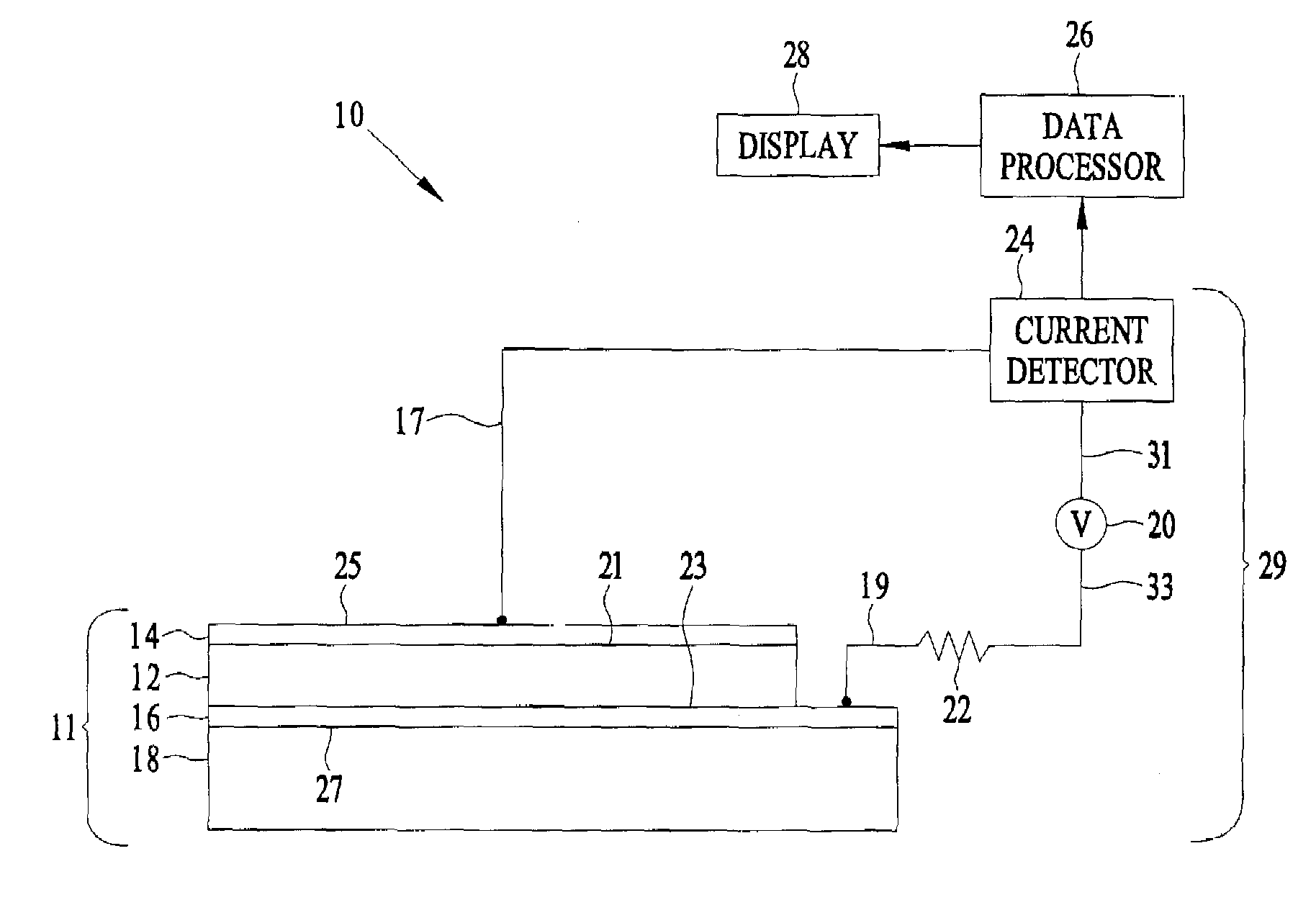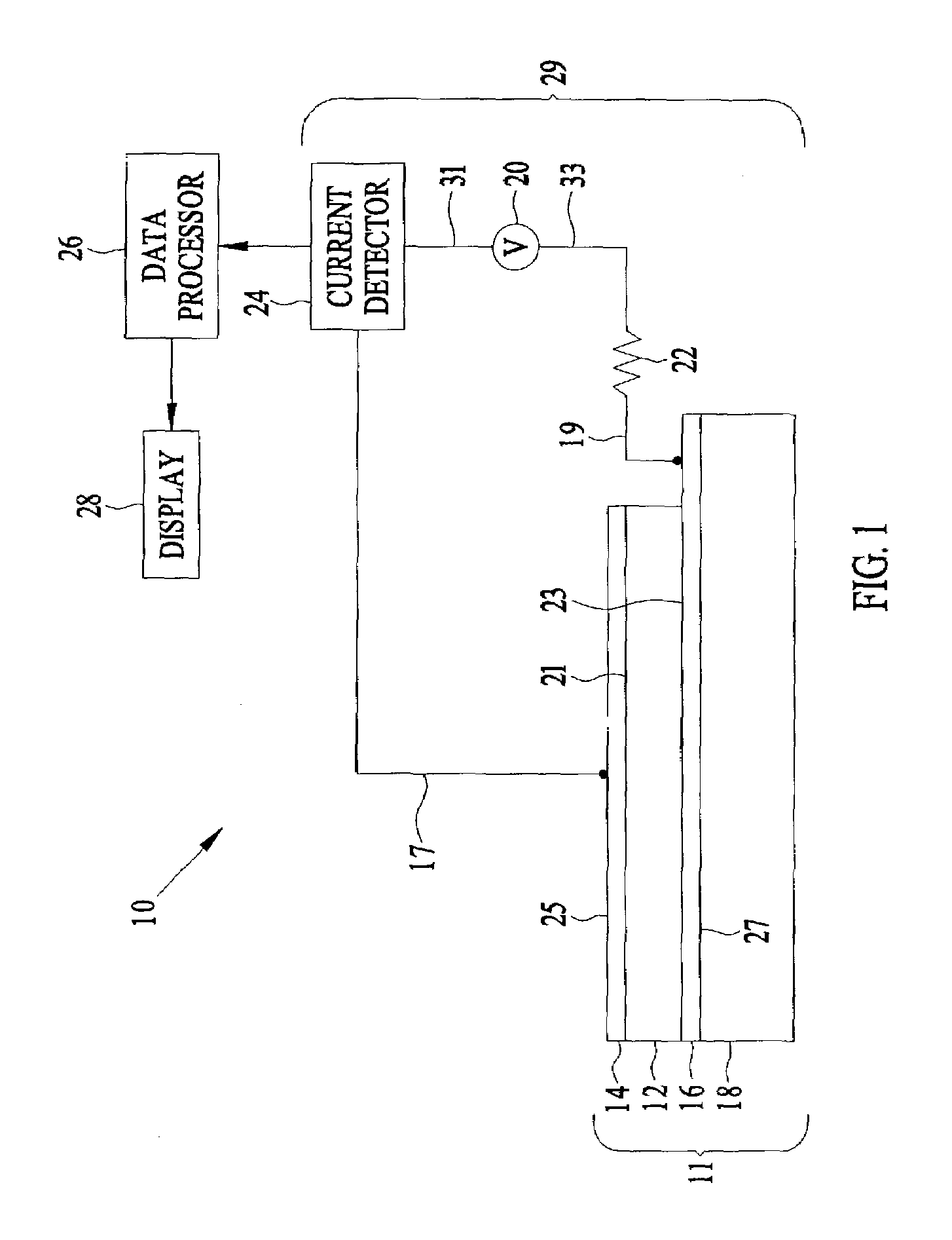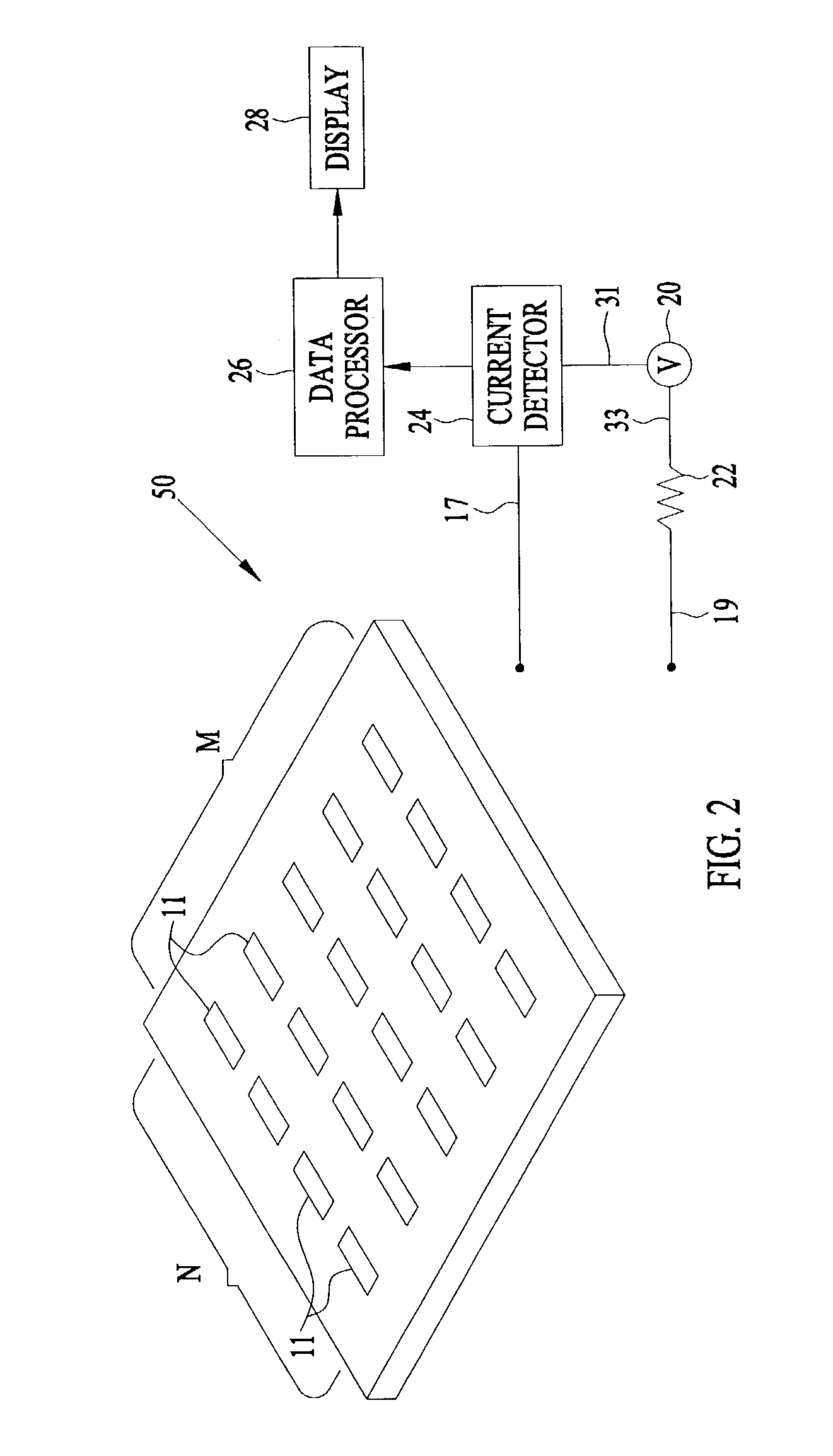Solid-state thermal neutron detector
a solid-state thermal neutron and detector technology, applied in the direction of instruments, biochemistry apparatus and processes, measurement with semiconductor devices, etc., can solve the problems of difficult boron compound layer ohmic contact, electronic noise and arcing, and the bulky bulk of common-use thermal neutron detectors such as gas proportional counters and scintillation counters
- Summary
- Abstract
- Description
- Claims
- Application Information
AI Technical Summary
Benefits of technology
Problems solved by technology
Method used
Image
Examples
Embodiment Construction
[0011]Referring to FIG. 1, there is shown an embodiment of a solid-state thermal neutron detector 10 that includes a layered structure 11 defined by an electrically insulating substrate 18, a first electrode 16 formed on the substrate, a neutron-reactive layer 12 affixed to the first electrode 16, and a second electrode 14 affixed to the neutron-reactive layer 12. A neutron-reactive layer is a layer in which free electron-hole pairs, or charge carriers, are created when thermal neutrons react with atoms in the layer. For example, in applications wherein neutron-reactive layer 12 consists essentially of a boron compound, the following primary reaction is believed to occur when neutrons are incident upon neutron-reactive layer 12: n+10B→7Li*+α, where n represents a neutron, B represents a boron atom, Li* represents an excited lithium atom, and α represents an alpha particle (helium nucleus). The alpha particles, with an energy of about 2.3 MeV, collide with other atoms in neutron-reac...
PUM
| Property | Measurement | Unit |
|---|---|---|
| thickness | aaaaa | aaaaa |
| thickness | aaaaa | aaaaa |
| temperatures | aaaaa | aaaaa |
Abstract
Description
Claims
Application Information
 Login to View More
Login to View More - R&D
- Intellectual Property
- Life Sciences
- Materials
- Tech Scout
- Unparalleled Data Quality
- Higher Quality Content
- 60% Fewer Hallucinations
Browse by: Latest US Patents, China's latest patents, Technical Efficacy Thesaurus, Application Domain, Technology Topic, Popular Technical Reports.
© 2025 PatSnap. All rights reserved.Legal|Privacy policy|Modern Slavery Act Transparency Statement|Sitemap|About US| Contact US: help@patsnap.com



